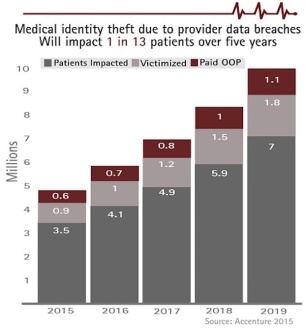Heart hackers: Cybersecurity as a threat to global health?
“One of the main cyber-threats is to think they don’t exist.”
With the rise of AI, blockchain and all else tech in health, challenges associated with these technologies have been easily forgotten due to their promising potential. Recent discussion at the Geneva Health Forum 2018 discussed the role of cybersecurity in the sphere of global health, in which Prof. Jean-Pierre Hubaux of EPFL introduced the concept of security as “the rightful access to data, ensuring access control, availability, audibility and accountability“, whereas privacy was defined as the “rightful use of data following legal imperatives and expressed wishes of the data owner“. With growing digital footprints, and over 110 million patients in the US having their data compromised in 2015 alone, cybersecurity is rapidly becoming a growing threat to global health [1].

Attacks on the health sector are usually targeted for financial gain, the most common cyberthreats in healthcare include [1]:
- Data theft for financial gain
- Data theft for impact
- Ransomware
- Data corruption
- Denial of service attacks
- Business e-mail compromise
There has been growing concern with the extension of cybercrime to medical devices [3]. Increased wireless connectivity and remote-sensing system has left these devices vulnerable to attacks. More attention was bought to medical devices, when the US Food and Drug Administration issued a safety communication regarding potential cybersecurity concerns involving malicious interference with battery life or essential programming functions in several pacemaker models made by St Jude Medical in 2017 [3].
Beyond what could be disastrous consequences for health systems and patients, Nature recently also flagged the lack of women present in the cybersecurity, with only 11% of women in this profession worldwide [4]. Not only are women underrepresented in the industry, but women have also been reported at higher odds of being hacked – a million more US women than men had their identities stolen in 2014 [4]. In order to stop this phenomena, the following was concluded:
"Cybersecurity’s future depends on its ability to attract, retain and promote women, who represent a highly skilled and under-tapped resource. The discipline also needs to learn about women’s experiences as victims of cybercrime and the steps needed to address the imbalance of harm"
-W.R. Poster, 2018
The development of common security standards and resilience remain key in the fight for improved Cybersecurity .
References
Cybersecurity and healthcare: how safe are we?
[2] Daniel B. Kramer and Kevin Fu. (2017). Cybersecurity Concerns and Medical Devices Lessons From a Pacemaker Advisory. Available: https://jamanetwork.com/journals/jama/article-abstract/2659246?redirect=true&redirect=true. Last accessed 21/04/2018.
[3] Lucas Mearian . (2016). Hackers are coming for your healthcare records — here’s why. Available: https://www.computerworld.com/article/3090566/healthcare-it/hackers-are-coming-for-your-healthcare-records-heres-why.html. Last accessed 21/04/2018.
[4] W.R. Poster . (2018 ). Cybersecurity needs Women . Available: https://www.nature.com/articles/d41586-018-03327-w. Last accessed 21/04/2018.
12 Jul 2018
